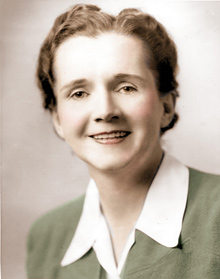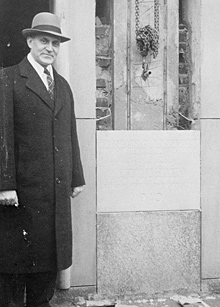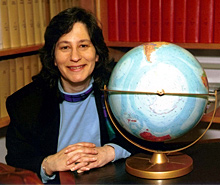History Makers

Best known for writing Silent Spring, ecologist and author Rachel Carson worked as a writer for the Bureau of Commercial Fisheries from 1935 to 1952. She believed that all life is interconnected and that everyone is responsible for stewardship of the environment.
“Through her vision of the interconnectedness of nature, her courage, and her integrity, Rachel Carson has inspired generations…”
Ferdinand Hassler “came to a nation with little science infrastructure and left a thriving organization of mathematicians, geodesists, topographers, hydrographers, instrument-makers, engravers, and printers….”
“… (T)his first climate model was based on Dr. Smagorinsky’s belief that only a completely new approach to scientific endeavor, departing from the independent, individual mode of inquiry, would produce answers to extremely complex problems.”
Excerpts from three of NOAA’s 200th
Anniversary Top Ten History Makers
No one knows for sure how many men and women have filled the rolls of NOAA and its ancestor organizations throughout 200 years of history. But it’s safe to say that they number in the hundreds of thousands. Many have distinguished themselves by serving the nation and the world and inspiring their NOAA colleagues with discoveries, innovations, and extraordinary influence and leadership. Most of us lucky enough to have worked at NOAA for any length of time can easily name contemporaries who left indelible marks of accomplishment and influence on NOAA’s science, service, and stewardship missions and on its people.

From 1938 to 1963, Francis Reichelderfer, above, guided Weather Bureau through World War II and brought modern technology to weather forecasting.
But just who among the thousands who have set the survey marks, charted the coast, measured the tides, predicted the weather, sampled the fisheries, built satellites, and supported scores of other NOAA missions has exerted the most far-reaching and compelling influence? Who among those who have come before us most shaped NOAA’s culture, laid the organizational groundwork, built its capabilities and infrastructure, or advanced ocean, earth, atmospheric, or biological sciences and environmental stewardship to make NOAA a world-renowned organization? They are the pioneers, the visionaries, the stalwarts, models of commitment and perseverance, and the brilliant minds on whose shoulders we, as NOAA employees, all stand and we, as citizens, should acknowledge with heartfelt thanks.

Dr. Susan Solomon of NOAA’s Office of Ocean and Atmospheric Research discovered the cause of stratospheric ozone depletion in the Antarctic in the 1980s.
Here we celebrate and honor 10 eminent individuals whose service to NOAA spans from our founding in 1807, through the Civil War, both world wars, and to the present day. All have bequeathed legacies of influence to NOAA or to society that continue to reverberate. Some like Ferdinand Hassler with the Coast Survey and Joseph Smagorinsky with the Geophysical Fluid Dynamics Lab were pioneers who established the foundations of NOAA science missions; others like Francis Reichelderfer of the Weather Bureau guided NOAA through periods of transformation brought on by advancing technology or historic events; still others like Rachel Carson and Susan Solomon contributed discoveries that are vital to human health worldwide. So significant are their contributions that we are proud to call them NOAA’s Top Ten History Makers.
Learning about those who shaped and dramatically influenced NOAA should give all of us following in their footsteps deeper regard, respect, and appreciation for their hallowed achievements. NOAA’s Top Ten History Makers deserve a rousing salute!
Now let’s meet these venerable and distinguished individuals (time with NOAA or ancestor organizations in parentheses):
- Alexander Dallas Bache (1843-1867): Expanded significantly the mission and geographic domain of the Coast Survey.
- Rachel Carson (1935-1952): Revered as the “mother of the age of ecology.”
- George Brown Goode (1872-1888): Established the methods and standards used in fishery research today.
- Ferdinand Rudolph Hassler (1807-1843): Imbued the Coast Survey, as its first superintendent, with unswerving devotion to accuracy, precision, and scientific integrity.
- David Simonds Johnson (1956-1982): Paved the way for satellite technology in NOAA.
- Ernest Lester Jones (1915-1929): Entrusted by four U.S. presidents to lead the Coast and Geodetic Survey.
- Francis Reichelderfer (1938-1963): Brought modern technology to weather forecasting.
- Joseph Smagorinsky (1953-1983): Combined computers and mathematical models for extended predictions of weather and trends in global climate.
- Susan Solomon (1981–present): Discovered the cause of depleted atmospheric ozone in the Antarctic ozone “hole.”
And now for our honorable mentions...









